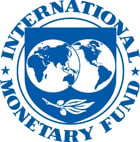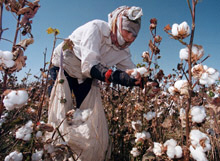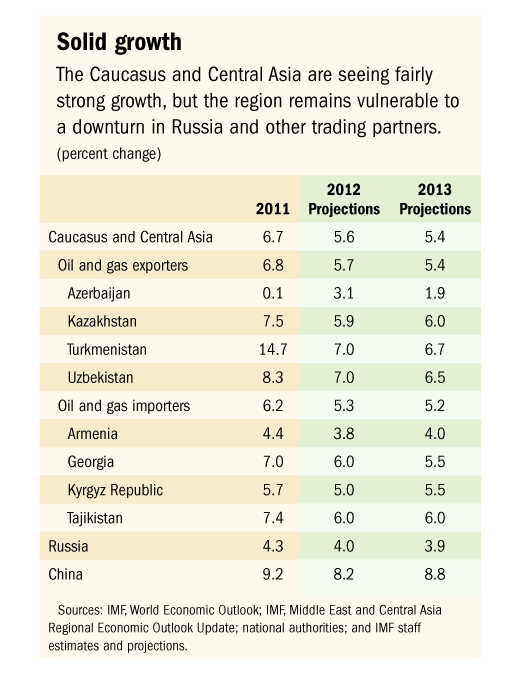
Typical street scene in Santa Ana, El Salvador. (Photo: iStock)
IMF Survey: Caucasus, Central Asia See Solid Growth, But Risks Remain
April 20, 2012
- High oil and gas prices buoy region’s hydrocarbon exporters
- Though global demand weaker, growth still robust across all countries
- Governments should strive to bolster buffers, reduce inequality
The outlook for the Caucasus and Central Asia region remains broadly positive, with growth for most countries projected to reach 5-7 percent, says the IMF’s latest economic outlook for the region.

Worker in Uzbekistan: CCA countries should take advantage of this period of strong growth to rebuild buffers, the IMF says (photo: Newscom)
REGIONAL ECONOMIC OUTLOOK
But a sharp slowdown in global economic activity could pose a risk to the forecast for the region’s eight countries, Middle East and Central Asia Department Director Masood Ahmed told reporters in Washington.
So far, the impact of the euro area crisis has been limited, Ahmed said, adding that despite a weaker external environment, oil and gas demand is expected to remain high this year and next, driving the region’s continued high growth.
“The region’s oil and gas exporters benefitted from the high price of oil, while the oil and gas importers benefitted from the continued recovery in Russia, which has brought a steady increase in workers’ remittances,” Ahmed observed.
High exports, strong public spending
The region’s oil and gas exporters—Azerbaijan, Kazakhstan, Turkmenistan, and Uzbekistan—saw 6.8 percent growth on average in 2011 (see table). With oil and gas prices forecast to remain high this year and next, growth is expected to remain strong. Because of a weaker external environment, growth will be slightly lower in 2012, at 5.7 percent. But this group of countries should be able to maintain high export levels and sustain activity in areas outside the oil sector through continued public spending.
The region’s oil and gas importers—Armenia, Georgia, the Kyrgyz Republic, and Tajikistan—grew by 6.2 percent last year. Because of lower levels of global demand, these countries are likely to see a moderation in export growth, but this decline will not amount to anything approaching the sharp collapse seen in 2009. Growth for these countries is expected to reach 5.3 percent in 2012.
Remittance inflows to CCA oil and gas importers, mainly from Russia, are also forecast to remain fairly strong, growing by an estimated 13 percent in 2012.
Inflation, which had been high, has been on a downward trend in most countries in early 2012.

Risks to the outlook
The most immediate concern is that a severe escalation of the euro area crisis would trigger a much sharper decline in global growth than currently envisioned—including in Russia and China, the region’s main trading partners. Such a development could result in lower commodity prices and remittances, Ahmed said.
He noted three actions that policymakers in the region could take to guard against the possibility that global risks materialize.
• Use this period of relatively strong growth to rebuild policy buffers to be prepared in case of a downturn;
• Develop a clear plan to address problem loans, given that banking sector balance sheets remain impaired in a number of countries (Kazakhstan, Kyrgyz Republic, Tajikistan);
• Sustain strong growth and ensure that it translates into benefits for the entire population, including by creating more jobs. This medium-term objective will require further progress on improving governance and the business environment.


